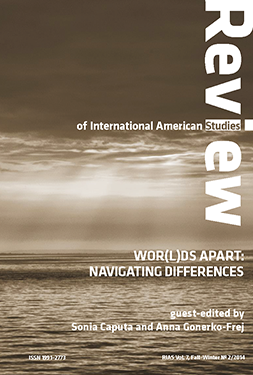Adamson, W. L. 2007. Embattled Avant-Gardes: Modernism’s Resistance to Commodity Culture in Europe. Berkeley: University of California Press.
Google Scholar
Google Scholar
Boyer, P. 1992. Urban Masses and Moral Order in America, 1820-1920. Cambridge: Harvard University Press.
Google Scholar
Brown, B. 2003. A Sense of Things: The Object Matter of American Literature. Chicago: Chicago University Press.
Google Scholar
Dawson, C. 1992. Lafcadio Hearn and the Vision of Japan. Baltimore: Johns Hopkins University Press.
Google Scholar
Eliot, C. W. 1869. ‘The New Education’, The Atlantic Monthly 23 (136): 203-20; 23 (137): 358-67.
Google Scholar
http://ebooks.library.cornell.edu/cgi/t/text/pageviewer-idx?c=atla;cc=atla;rgn =full%20text;idno=atla0023-2;didno=atla0023-2;view=image;seq=0209;node=atla0023-2%3A10
Google Scholar
Goodman, S. 2011. Republic of Words: The Atlantic Monthly and Its Writers, 1857-1920. Hanover: University Press of New England.
Google Scholar
Hearn, L. 1897. Gleanings in Buddha Fields: Studies of Hand and Soul in the Far East. Boston: Houghton Mifflin and Company.
Google Scholar
Hearn, L. 1894. Glimpses of Unfamiliar Japan. Boston: Houghton Mifflin and Company.
Google Scholar
Hearn, L. 1895. Out of the East: Reveries and Studies in New Japan. Boston: Houghton Mifflin and Company.
Google Scholar
Hearn, L. 1904. Japan: An Attempt at Interpretation. New York: MacMillan.
Google Scholar
Kennard, N. 1912. Lafcadio Hearn: Containing Some Letters from Lafcadio Hearn to His Half-sister, Mrs. Atkinson. New York: D. Appleton and Company.
Google Scholar
Lawless, R. M. 2001 Lafcadio Hearn, Critic of American Life and Letters. Ann Arbor: UMI.
Google Scholar
Google Scholar
Leach, W. 1993. Land of Desire: Merchants, Power, and the Rise of a New American Culture. New York: Vintage Books.
Google Scholar
Lears, T. J. J. 1994. No Place of Grace: Antimodernism and the Transformation of American Culture, 1880-1920. Chicago: University of Chicago Press.
Google Scholar
Lears, T. J. J. 2009. Rebirth of a Nation: The Making of Modern America, 1877-1920. New York: HarperCollins.
Google Scholar
Lears, T. J. J. 2003. Something for Nothing: Luck in America. London: Penguin Books.
Google Scholar
Levine, L. W. 1988. Highbrow/Lowbrow: The Emergence of Cultural Hierarchy in America. Cambridge: Harvard University Press.
Google Scholar
Longman Dictionary of Contemporary English. 2003. Edinburgh: Pearson Education Limited.
Google Scholar
Low, S. 1898. ‘The Trend of the Century’, The Atlantic Monthly 82 (490): 153-65.
Google Scholar
http://ebooks.library.cornell.edu/cgi/t/text/pageviewer-idx?c=atla;cc=atla;rgn =full%20text;idno=atla0082-2;didno=atla0082-2;view=image;seq=0159;node=atla0082-2%3A2
Google Scholar
McGee, W. J. 1898. ‘Fifty Years of American Science’, The Atlantic Monthly 82 (491): 307-21.
Google Scholar
http://ebooks.library.cornell.edu/cgi/t/text/pageviewer-idx?c=atla;cc=atla;rgn=full%20text;idno=atla0082-3;didno=atla0082-3;view=image;seq=0313;node=atla0082-3%3A2
Google Scholar
Menand, L. 2001. The Metaphysical Club: A Story of Ideas in America. New York: Farrar, Straus and Giroux.
Google Scholar
Mervin, C. 1988. When Old Technologies Were New: Thinking about Electric Communication in the Late Nineteenth Century. New York: Oxford University Press.
Google Scholar
Murray, P. 1993. Fantastic Journey: The Life and Literature of Lafcadio Hearn. Ann Arbor: University of Michigan Press.
Google Scholar
Okakura, K. 1964. The Book of Tea. New York: Dover.
Google Scholar
Price, S. 2001. Primitive Art in Civilized Places. Chicago: Chicago University Press.
Google Scholar
Rosenstone, R. A. 1988. Mirror in the Shrine: American Encounters with Meiji Japan. Cambridge: Harvard University Press.
Google Scholar
Schudson, M. 1978. Discovering the News: A Social History of American Newspapers. New York: Basic Books.
Google Scholar
Google Scholar
Susman, W. I. 2003. Culture as History: The Transformation of American Society in the Twentieth Century. Washington: Smithsonian Institution Press.
Google Scholar
Teukolsky, R. 2009. The Literate Eye: Victorian Art Writing and Modernist Aesthetics. Oxford: Oxford University Press.
Google Scholar
Thurston, R. H. 1891. ‘The Scientific Basis of Belief’, The North American Review 153 (417): 181-192.
Google Scholar
http://ebooks.library.cornell.edu/cgi/t/text/pageviewer-idx?c=nora;cc=nora;rgn=full%20text;idno=nora0153-2;didno=nora0153-2;view=image;seq=0185;node=nora0153-2%3A5
Google Scholar
Tompkins, J. 1986. Sensational Designs: The Cultural Work of American Fiction 1790-1860. New York: Oxford University Press.
Google Scholar
Google Scholar
Trachtenberg, A. 2007. The Incorporation of America: Culture and Society in the Gilded Age, 25th Anniversary Edition. New York: Hill and Wang.
Google Scholar
Tweed, T. A. 2000. The American Encounter with Buddhism: Victorian Culture and the Limits of Dissent, 1844-1912. Chapel Hill: University of North Carolina Press.
Google Scholar
Werth, B. 2010. Banquet at Delmonico’s: The Gilded Age and the Triumph of Evolution in America. Chicago: University of Chicago Press.
Google Scholar
Wiebe, R. H. 1967. The Search for Order 1877-1920. New York: Hill and Wang.
Google Scholar
Wright, F. L. 2008. ‘The Japanese Print: An Interpretation’, in P. Brooks (ed) The Essential Frank Lloyd Wright: Critical Writings on Architecture. Princeton: Princeton University Press, 74-81.
Google Scholar
Yu, B. 1964. An Ape of Gods: The Art and Thought of Lafcadio Hearn. Detroit: Wayne State University Press, 1964.
Google Scholar



 10.31261/RIAS
10.31261/RIAS